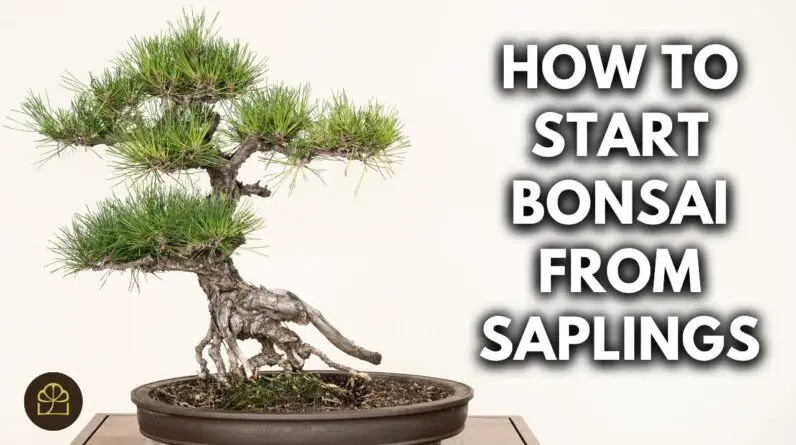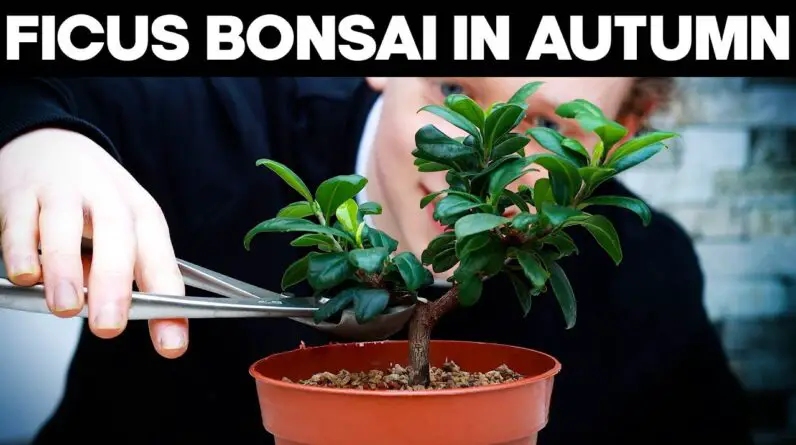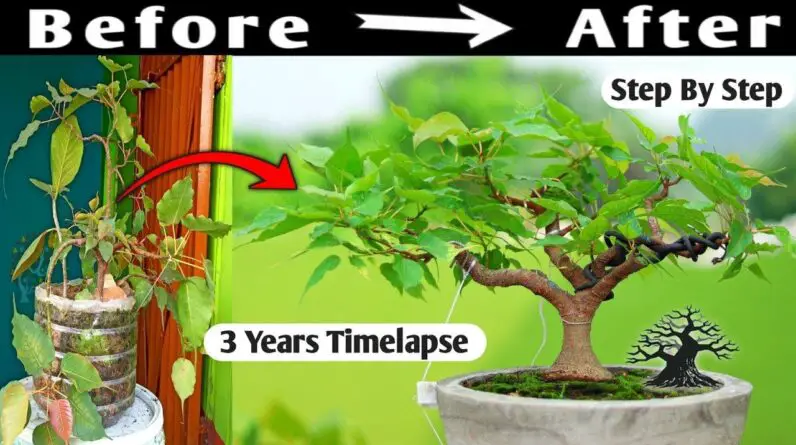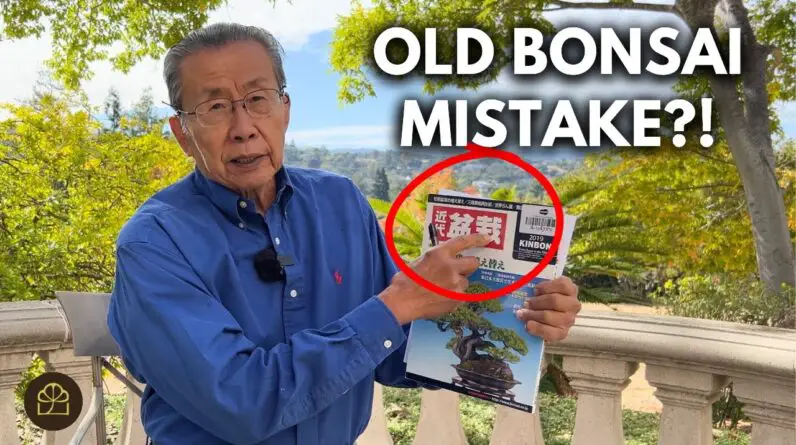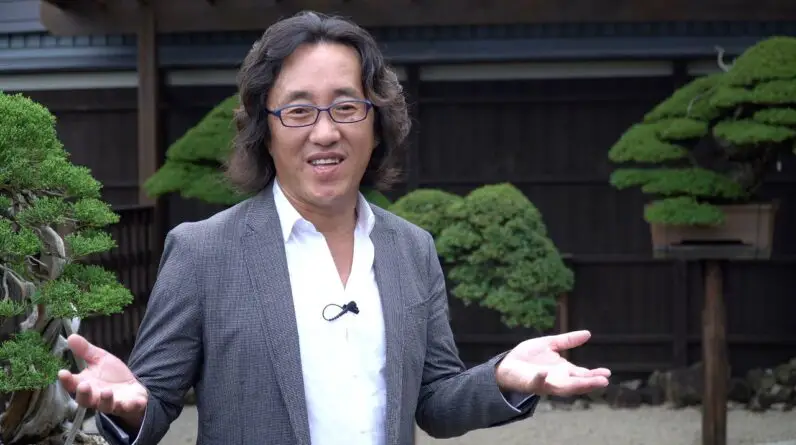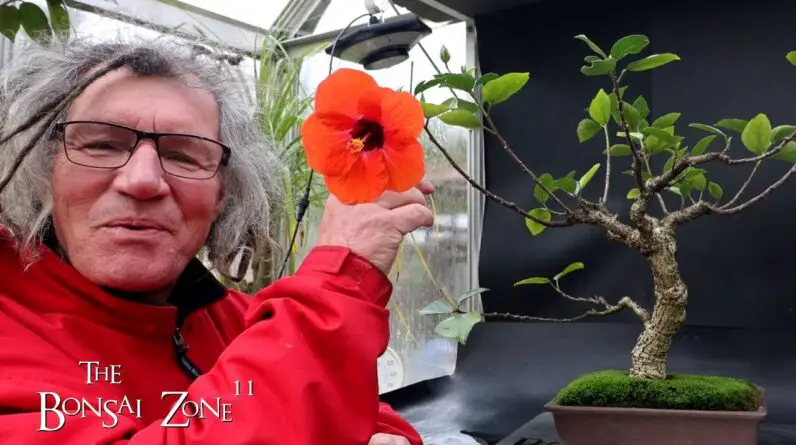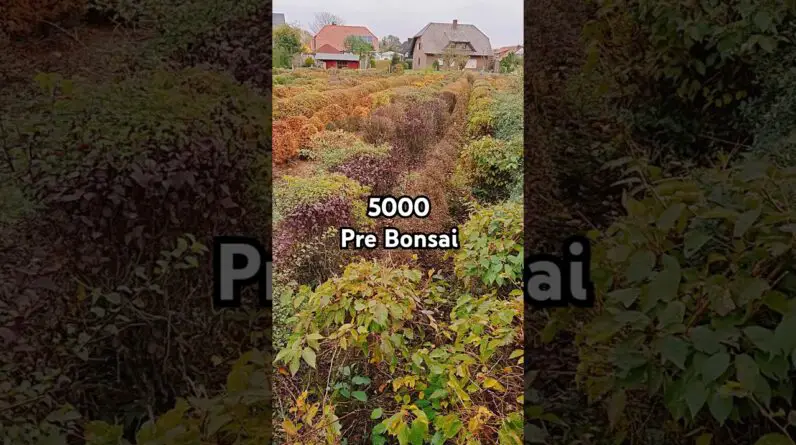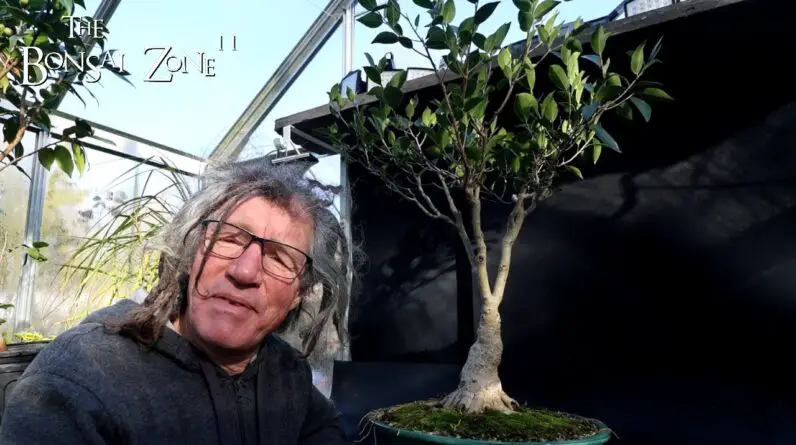Wish to discover just how to make an Apple bonsai tree? In this video clip by Bonsai Empire, they reveal you exactly how to trim and wire an Apple tree that is around 15 years old. The video clip was filmed throughout fall, when the tree was full of little apple trees.
Bonsai Empire is passionate concerning sharing the living art of Bonsai and produced this do it yourself tutorial to aid and inspire newbies. This video clip belongs to their on the internet programs, yet they use several other free videos as well.
So if you want finding out more about Bonsai techniques, head over to Bonsai Empire’s web site!
In the video, they clarify the process of pruning and electrical wiring this Apple bonsai tree. They use small pruning shears, pliers, and cord cutters. The leading branch is the very first to be trimmed, and then they concentrate on 2 thicker branches to achieve the preferred shape.
They show the importance of a 360-degree approach when trimming and electrical wiring to prevent any dead angles. After the pruning and electrical wiring, the tree looks much more polished and balanced. With routine upkeep, this tree will certainly remain to flourish and expand new branches in the upcoming springtime. If you wish to learn more concerning pruning, wiring, and repotting techniques, take into consideration joining Bonsai Empire’s on-line programs and gain access to expert assistance and the chance to ask the instructors questions straight.
Apple Bonsai Tree: An Intro
Welcome to the world of apple bonsai trees! Developing and growing a mini apple tree can be a satisfying and fulfilling hobby. Not just do these bonsai trees offer a lovely aesthetic, yet they also use the opportunity to grow your very own fruits in a tiny and convenient room.
In this detailed short article, we will direct you through the procedure of selecting the appropriate apple tree selection, collecting the required products, growing the tree from seeds, trimming and wiring methods, appropriate upkeep, potting factors to consider, and the differences between exterior and indoor apple bonsai trees.
Think about the Dimension of the Bonsai
When picking an apple tree range for bonsai cultivation, it is very important to consider the utmost dimension of the tree. Considering that bonsai trees are indicated to be mini versions of their bigger counterparts, choosing a variety that naturally remains tiny is necessary. Search for apple tree ranges that are known for their compact growth and smaller stature, such as columnar apple trees or naturally dwarf ranges. This will ensure that your bonsai continues to be in proportion and is much easier to handle.
Pick a Crab Apple Tree Range
Crab apple trees, with their tiny and vivid fruits, are typically the preferred selection for apple bonsai farming. These trees normally have extra delicate and proportional attributes, making them well-suited for bonsai aesthetic appeal. Furthermore, crab apple trees are hardy and adaptable, making them less complicated to take care of and keep as bonsai specimens. Think about selections such as Malus sylvestris or Malus floribunda, which are typically used in bonsai growing.
Consider the Environment and Place
Before picking the apple tree selection for your bonsai, it is essential to consider the climate and area where you intend to grow it. Various apple tree ranges grow in different environments, so select a selection that is fit to your particular area. Additionally, remember the quantity of sunlight and temperature requirements of the picked selection. The majority of apple trees need full sun to grow, so make certain that your chosen place supplies enough sunshine throughout the day.
Select a Suitable Bonsai Pot
Picking the right bonsai pot is vital for the health and aesthetic appeals of your apple bonsai tree. Try to find a pot that is proportionate to the size of your tree and matches its overall style. Bonsai pots can be found in various products such as ceramic, plastic, or clay. Each material has its own advantages and considerations, so pick one that suits your personal preferences and the specific requirements of your apple bonsai tree.
Get Quality Bonsai Soil
High-grade bonsai soil is vital for the healthy growth of your apple bonsai tree. The soil must provide ample drain while maintaining sufficient wetness for the tree’s roots. You can buy pre-made bonsai dirt blends that are especially made for bonsai cultivation, or you can produce your very own mix by integrating elements such as Akadama, pumice, and lava rock. Trial and error with various soil blends might be needed to locate the ideal balance for your apple bonsai tree.
Obtain Pruning and Circuitry Devices
Trimming and electrical wiring are necessary methods for forming and keeping the kind of your apple bonsai tree. To effectively prune and wire your bonsai, you will need a set of correct tools. Some important devices include a scooped branch cutter for precise trimming, bonsai cable cutters for handling the cord, and pliers or tweezers for intricate job. Purchase premium tools to make sure accuracy and decrease damages to your apple bonsai tree.
Gathering Apple Seeds
One of the most satisfying ways to begin an apple bonsai tree is by growing it from seeds. You can collect apple seeds from ripe fruits or purchase them from trusted distributors. Make certain that the seeds are fresh and sensible for the best chances of germination.
Prep work of Seeds for Planting
Before planting the apple seeds, it’s important to prepare them for optimal germination. Begin by saturating the seeds in water for 24 hours to soften the external seed layer. After soaking, remove the seeds from the water and allow them to completely dry for a couple of days. This process aids damage the seed’s inactivity and enhances the opportunities of successful germination.
Planting and Germination Refine
As soon as the seeds are prepared, plant them in tiny pots loaded with well-draining bonsai dirt. Place the pots in a warm and bright area, and maintain the dirt consistently damp. Germination generally takes about two to four weeks, depending upon the variety and environmental problems. Once the seedlings have grown, select the healthiest ones to proceed expanding as your future apple bonsai trees.
Recognizing Trimming Methods
Trimming is a crucial facet of bonsai cultivation that assists maintain the tree’s dimension, shape, and total looks. By uniquely eliminating branches and foliage, you can accomplish the preferred type and equilibrium. Learn more about different trimming methods such as maintenance trimming, branch pruning, and squeezing to maintain the wellness and shape of your apple bonsai tree.
Recognizing the Right Branches to Prune
When pruning your apple bonsai tree, it’s important to recognize the branches that require to be trimmed. Search for branches that interrupt the wanted type or impede the tree’s general balance. Eliminate any dead, damaged, or undesirable branches to promote healthy and balanced growth and prevent illness. Consult bonsai sources or look for guidance from knowledgeable bonsai fanatics if you’re unsure which branches to prune.
Pruning to Attain Desired Shape
Trimming is not just regarding maintenance yet likewise regarding forming your apple bonsai tree. Usage pruning techniques to guide the tree’s development and accomplish the preferred form and design. Take into consideration traditional bonsai shapes such as formal upright, inclining, or waterfall, and adjust them to suit the qualities of your apple bonsai tree.
Preparing the Tree for Electrical wiring
Wiring is an additional essential method in bonsai farming that assists develop and preserve the preferred form and framework of your apple bonsai tree. Prior to applying cords, make sure that the branches and trunk are adaptable adequate to be manipulated without creating damage. Younger branches are a lot more flexible and less complicated to wire, while older branches may require steady flexing in time.
Picking the Right Wire Size
Choosing the appropriate wire dimension is vital to avoid damaging the branches of your apple bonsai tree. The wire ought to be solid sufficient to hold the wanted form without cutting into the bark. Select a cable dimension that is around one-third of the thickness of the branch being wired. Copper or aluminum cord is generally made use of, yet make sure it is soft enough to be quickly shaped.
Using Wiring Techniques
To wire your apple bonsai tree, start by covering the wire at the base of the branch or trunk and then gently spiral it upwards, making certain to keep a 45-degree angle between the cord and the branch. Be careful not to cover the wire also securely, as it can restrict the tree’s blood circulation and cause damages. When the desired form is accomplished, protect the wire by twisting completions with each other or using wire clips. Remove the cable after a couple of months to prevent it from cutting into the bark.
Watering and Dampness Control
Appropriate watering is important for the health and vigor of your apple bonsai tree. The frequency and amount of water needed depend on numerous elements such as the climate, pot dimension, and tree’s development stage. Water your apple bonsai tree when the top inch of soil really feels completely dry, ensuring that the water reaches the entire root system. Stay clear of overwatering, as it can lead to root rot and various other fungal diseases.
Fertilizing and Nutrient Requirements
Keeping dirt fertility is essential for the healthy growth of your apple bonsai tree. Use a balanced plant food during the expanding season to provide the necessary nutrients for optimal development. Use natural or slow-release fertilizers especially formulated for bonsai trees, following the recommended dosage guidelines. Frequently monitor the tree’s response to fertilization and adjust the feeding routine as necessary.
Insect and Disease Administration
Like any other plant, apple bonsai trees can be prone to numerous insects and conditions. Frequently inspect your tree for indicators of invasion, such as tarnished fallen leaves, insects, or unusual development. If any problems are found, promptly take suitable procedures to regulate and get rid of the problem. Take into consideration making use of natural pest control techniques or speak with experts if essential.
Repotting Frequency and Timing
Repotting is a necessary task in bonsai farming that allows for root system wellness and overall growth control. The regularity and timing of repotting depend upon numerous elements such as the age and growth price of the apple bonsai tree. As a basic guideline, repotting is generally done every 2 to 3 years, ideally throughout the very early springtime prior to the tree starts proactively growing.
Picking an Appropriate Bonsai Pot
When repotting your apple bonsai tree, choose a brand-new pot that is a little larger than the current one. Think about the aesthetics and overall balance of the tree when selecting the pot’s shape and style. Ensure that the pot gives appropriate water drainage openings and is made from a material that is suitable for bonsai farming.
Transplanting and Origin Trimming
Throughout repotting, meticulously get rid of the tree from its existing pot and gently loosen up the origin round. Inspect the roots and cut any kind of broken or excessively lengthy roots. This process, referred to as root pruning, aids boost brand-new root growth and maintains the tree’s origin system compact. After root trimming, position the tree in the brand-new pot, making sure that the roots are evenly dispersed and covered with fresh bonsai soil.
Proper Potting Strategies
When potting your apple bonsai tree, use correct strategies to ensure its stability and healthy development. Position the tree somewhat off-center in the pot to develop a sense of movement and balance. Secure the tree in place utilizing bonsai wires or rocks, and fill the continuing to be area in the pot with bonsai dirt, making certain that no air pockets are left. Water the fresh potted tree completely and monitor its recuperation throughout the following weeks.
Advantages and Considerations for Outdoor Bonsai
Growing an outside apple bonsai tree allows it to experience the natural changing seasons, which can enhance its overall beauty. Outdoor bonsai trees generally have more space to grow and develop a stronger root system. However, outdoor bonsai trees require careful consideration of climate and weather conditions, protection from extreme temperature fluctuations, and regular exposure to sunlight.
Benefits and Challenges of Indoor Bonsai
Growing an apple bonsai tree indoors provides more controlled conditions and allows enthusiasts in colder climates to enjoy bonsai cultivation year-round. Indoor bonsai trees require careful attention to temperature, humidity, and lighting conditions. Supplemental lighting may be necessary, especially during the winter months when sunlight exposure is limited. Additionally, indoor bonsai trees may require more vigilant pest and disease management due to the controlled environment.
Creating and caring for an apple bonsai tree is a rewarding and fulfilling endeavor. With proper knowledge and techniques, you can enjoy the beauty of nature in a miniature form and even grow your own miniature apples.
By choosing the right variety, gathering the necessary materials, mastering pruning and wiring techniques, maintaining proper care, and selecting the right pot and location, you can cultivate a stunning apple bonsai tree that brings joy and tranquility to your surroundings.
Happy bonsai cultivation!
[sspostsincat category=”Star Apple Bonsai”]


